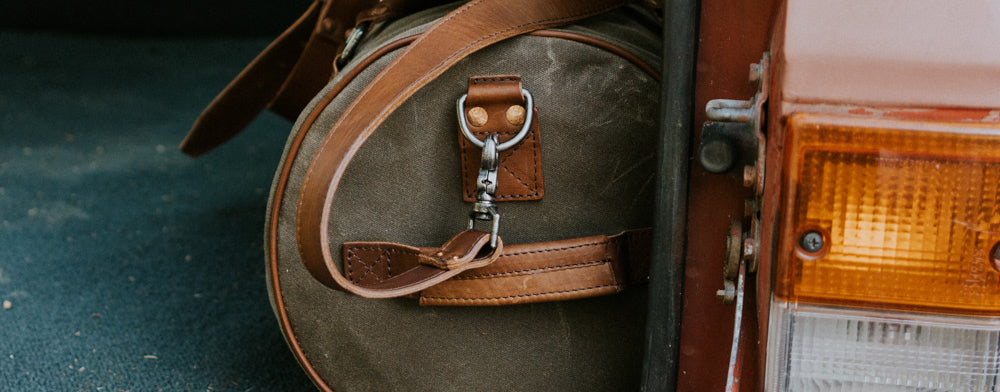Your Cart is Empty
You are €99,00 away from free shipping!
Your Cart is Empty
You are €99,00 away from free shipping!

We have gritty, seafaring men to thank for developing one of the oldest materials in the world still used today: waxed canvas (also called waxed cotton). Centuries ago, sailors noticed their sails caught better wind when wet. But wet sails are heavy sails—so, resourceful Scottish sailors in the mid-19th century discovered they could cure the sail fabric. This allowed the fabric to receive water on the surface, but not soak in.
These pioneers of waxed canvas applied linseed oil to their sailcloth, and eventually to their capes (the precursor to the fisherman’s slicker), to waterproof the fabric. Interestingly, one downside to the linseed oil was it yellowed as it aged - which is why to this day, fisherman’s slickers are traditionally yellow.
In the 1930s, the application of linseed oil was replaced with a new process: rather than applying linseed oil to the surface of the canvas, the cotton cloth was impregnated with paraffin wax. This produced a waxed canvas that remained highly water resistant, but more breathable and less stiff (and eliminated the problem of yellowing).
After its initial creation and use at sea, waxed canvas spread to military applications. Being waterproof, waxed canvas was the fabric of choice for clothing the British Armed Forces during World War II, resulting in Britain having the only military with waterproof clothing. Moving forward, armed forces utilized waxed canvas for uniforms, tents, and duffles because of its durability, comfort, and water resistance.
After WWII, waxed canvas emerged commercially. Waxed cotton was sold in Britain as heavy duty rainwear, primarily used by farmers and gamekeepers. Soon, motorcyclists forged a whole new specialist market for waxed canvas motorcycle clothing and gear. Today, creations using waxed canvas range from clothing and shoes to bags and camping gear. Waxed cotton canvas is a rare example of a fabric invention that has stood the test of time. While methods and applications have changed over the years, the history of waxed canvas remains rich - and echos the grit of those seafaring men.
To see how we're honoring this great tradition, click to check out our collection of rugged waxed canvas bags, padfolios, and more.
Orders shipped to Canada may be subject to import duties, tariffs, and taxes charged by Canadian customs. These fees are not included in our prices or shipping costs. You will be responsible for any additional charges upon delivery. Please review local customs regulations before placing your order.

